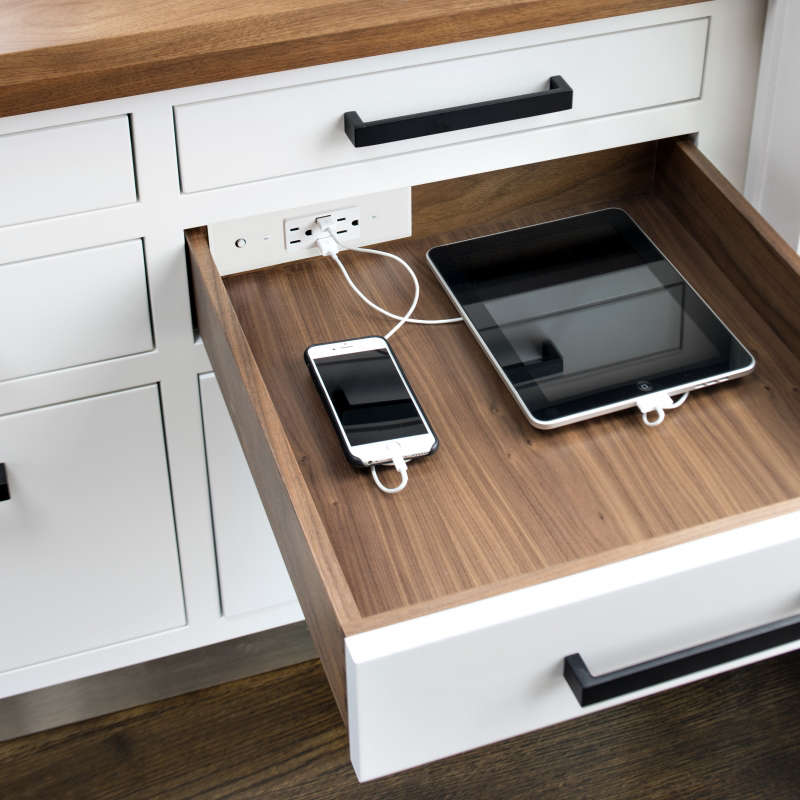These days there’s lots of talk about “unplugging”: The National Day of Unplugging, for example, is designed to “help hyperconnected people embrace the ancient ritual of a day of rest,” with an aim to “slow down lives in an increasingly hectic world.” Those of us navigating the uncharted terrain of Parenthood 2.0 know the challenges, especially when it comes to technology.
At what age is social media appropriate? How much screen time is too much? Research only goes so far to supply the answers: You can find one study that says “video games make kids violent” and on the next click, another study claiming, “video games make kids more creative!”
As a general rule, I tend to fall back on what my grandmother always said: Moderation is key. Here are 10 tips for keeping tech in check with your family.

1. Talk to your kids about technology.
In my interview with Larry Rosen, Ph.D., a psychologist and author of iDisorder: Understanding Our Obsession with Technology and Overcoming Its Hold on Us, he recommended setting clear limits for technology, particularly at dinnertime—absolutely no technology (adults or children) at the table. He also recommends weekly family meetings starting with kids as young as age three. Sit on the floor with your kids, at their eye level. Ask them questions about technology: What is your favorite game? Ask them about online teasing. “Parents have to be absolutely nonjudgmental in their responses,” Rosen says. “The goal is to develop family trust so that as kids grow older, and things like cyber-bullying do come up, kids feel comfortable sharing.”
2. Set specific windows of time when technology is allowed at home.
The American Academy of Pediatrics and the White House Task Force on Childhood Obesity recommend keeping children under the age of two as screen-free as possible and limiting screen time for older children. Too much screen time has been linked to poor sleep, a shorter attention span, and decreased physical activity. Personally, I allow my kids to watch TV on certain days when they are exhausted (or I am!) for one hour, and I set stricter limits on interactive technology, like video games and apps, which are only allowed on airplanes.

3. Make your kids earn their time online.
Change the passwords for your Wi-Fi (and your devices) regularly. Make a list of chores (make your bed, do your homework, brush your teeth, tell your mother how fabulous she is!) that kids must complete before they can receive the password. One family I know uses a tally system: Kids can earn tallies for good grades, homework, behavior, at-home responsibilities, etc. And five tallies will earn them 30 minutes of an app or an age-appropriate game.
4. Set tech free zones (or times) in the house.
For example, no gadgets allowed in the dining room. Or, no technology after 7 p.m. (This is good for adults too. And great for sleep hygiene.) As Frederick Zimmerman, an expert on media and child health and the chairman of the Department of Health Service at UCLA said, “Kids need laps, not apps.” And whether it is the kid playing the app, or the adult—all family members need time to be together.

5. Model good technology behavior.
We can’t expect our kids to set healthy technology limits while we chat into a smartphone wedged cheek-to-shoulder, scrolling the iPad for news with one hand, while stirring tonight’s soup with the other. Our kids imitate what we model—and studies show that to be happy, productive, and well-rested people, we need to take proactive steps to minimize our always-on, ever-available status. When you walk in the door to greet your family, put the smart phone (and the iPad, the laptop) away. In her lovely book, The Mindful Child: How to Help Your Kid Manage Stress and Become Happier, Kinder, and More Compassionate, Susan Kaiser Greenland makes the case for the new ABCs that we should be teaching children: Attention, Balance, Compassion. Teaching attention starts with shutting the devices down.

6. Limit video games, apps, and handheld devices to special occasions (airplanes, illness, etc).
“All screen time is not equal,” says Michael Rich, director of the Center on Media and Child Health at Boston Children’s Hospital. “What a kid does on an iPad is totally different from what they are doing when they are watching TV. It’s different psychologically, neurologically, educationally—so we can’t just lump all screens together.” Studies show that the more interactive technologies (apps, games) tend to be harder on young, developing brains. Here’s my rule: No violent video games ever. Educational apps and age-appropriate games are allowed on airplane trips—that’s it.
7. Consider making Sunday a technology Sabbath.
(Or if not the whole day, at least part of the day, like after lunch.) Have you ever noticed how amazing it feels when the power goes out? You can hear the birds chirping, you engage in meaningful conversation with your partner, you search for the flashlight and snuggle with your children. If you call technology off-limits on Sunday, your kids may get bored, complain, or otherwise make a fuss. But in an interview with Krista Tippett on “On Being,” Sherry Turkle, who directs the MIT Initiative on Technology and Self, says that we need to teach our children the rewards of solitude–something that our kids will have to work harder to learn ever before. She quotes an old saying: “If you don’t teach your children to be alone, they’ll only always know how to be lonely.” (See also Turkle’s Alone Together: Why We Expect More from Technology and Less from Each Other.)

8. Do not use technology as a babysitter.
According to a study by child safety advocacy group Common Sense Media, one in five parents uses a smartphone or tablet to keep children distracted while running errands. It’s convenient, sure–but it also takes away the opportunity for kids to interact with the world, to learn how to manage their own discomfort, and to be bored. Boredom is a necessary part of childhood (and adulthood). And who knows what your kids might do when struck with the right balance of boredom and technology restrictions? Just look at Caine Monroy, the nine-year-old boy from East Los Angeles who built an incredible, working arcade out of cardboard boxes from his dad’s auto parts store. If Caine had been playing video games in the corner all summer, would he have masterminded that amazing arcade? (If you missed this viral hit, check out the video.)
9. Challenge teachers and administrators to explain how and why they are using technology in the classroom.
Are teachers using it because they can? Is the school implementing an iPad program because they feel like they should? There is wide variation across schools in terms of technology use. Some schools are wired around the clock, while others, like the Waldorf Schools–a popular choice among Silicon Valley tech giants–don’t allow technology at all (even at home). Do your research, ask questions, and don’t be shy about getting answers.

10. Teach your children to respect technology.
Make your own personal gadgets (smartphone, tablet, e-reader, etc.) off-limits. Madeline Levine, author of Teach Your Children Well: Parenting for Authentic Success, says that kids need PDF—playtime, downtime, and family time. Teach your children that expensive technology gadgets are not toys. They are tools for adults that, when supervised and used properly, can be a great learning tool. And as they get older, make sure children understand that what they post on the Web, stays on the Web. There is no online eraser.
How do you manage technology in your family? We’d love to know; tell us your strategies in the Comments section.
More advice in:
- 10 Secrets for Happy Housekeeping
- 10 Secrets for a Better Night’s Sleep
- 10 Ways to Declutter Your Tech Experience
N.B. This post is an update; the original story ran on April 10, 2013.




Have a Question or Comment About This Post?
Join the conversation (3)